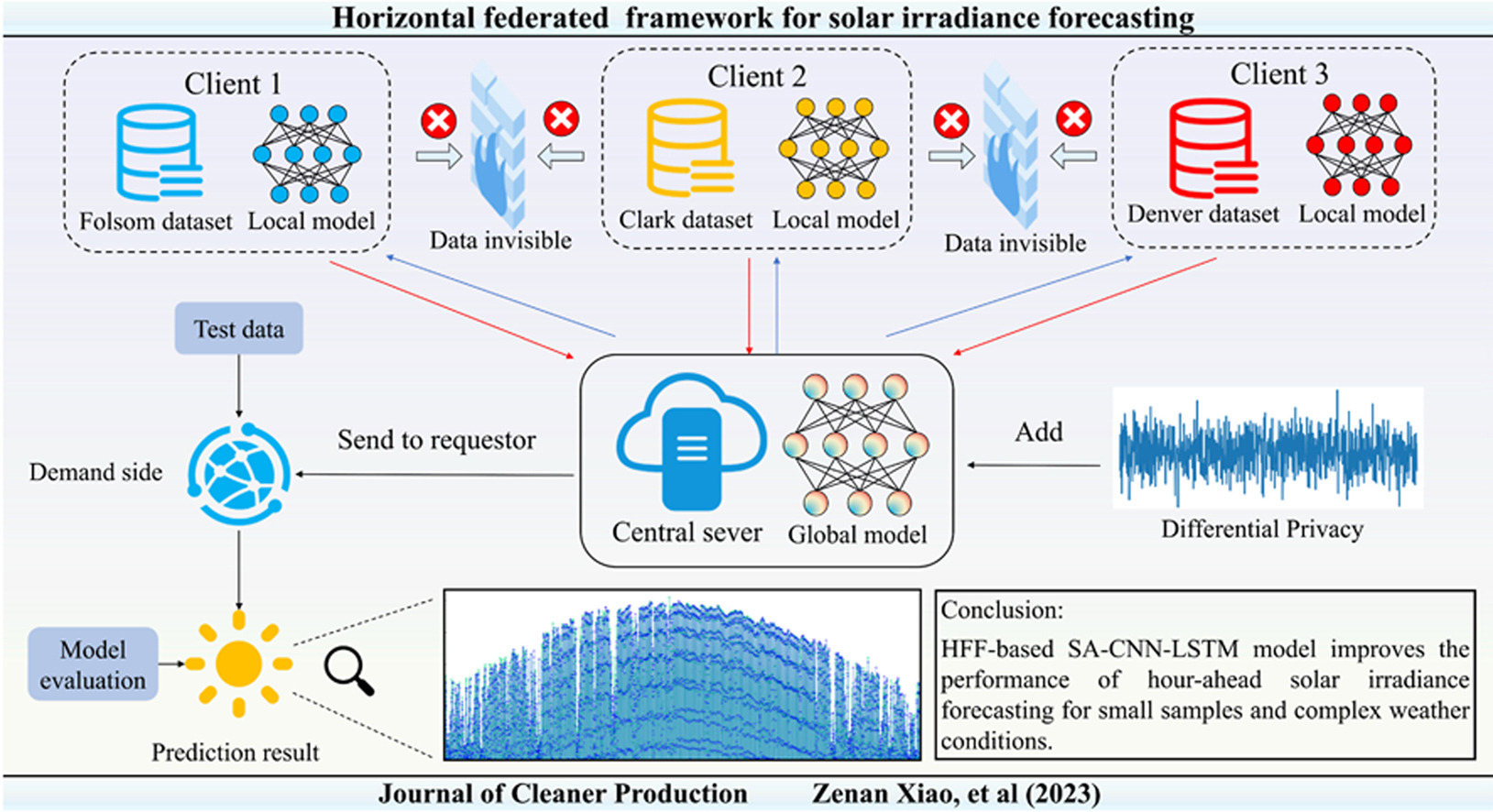博文
云师大物电学院黄小乔、邰永航教授在知名期刊《Journal of Cleaner Product》发表最新研究成果
||
2024年1月3日,Elsevier 旗下top期刊《Journal of Cleaner Product》在线发表了云南师范大学物理与电子信息学院黄小乔、邰永航教授课题组最新研究成果《An interpretable horizontal federated deep learning approach to improve short-term solar irradiance forecasting》。云南师范大学物理与电子信息学院黄小乔、邰永航教授为通讯作者。
 Abstract
AbstractSolar irradiance forecasting is critical in the planning and operation of solar power plants for production scheduling, energy trading, and maintenance planning. Accurate solar irradiance forecasting is crucial for efficient and stable power systems. Various deep learning (DL) methods have been researched in solar irradiance forecasting because of their powerful capabilities of nonlinear mapping. However, traditional DL models face challenges with small sample sizes, irradiance fluctuations, and data privacy concerns. On this foundation, it is also critical to ensure the interpretability of artificial intelligence (AI) models, as interpretable and trustworthy predictive models can help operators make effective decisions. Focusing on the above-mentioned issues, a privacy-preserving, interpretable, and DL-based model is proposed to improve the forecast accuracy of solar irradiance while ensuring the data available but not visible to each participant and prediction comprehensibility. This model is constructed by horizontal federated framework (HFF), self-attention (SA) mechanism, convolutional neural network (CNN), and long short-term memory (LSTM) network, named HFF-based SA-CNN-LSTM. A series of comprehensive experiments spanning various climate regions are designed to assess model performance under different federated conditions. The experiments show that this method significantly improves forecasting accuracy, especially in scenarios with incomplete data and highly fluctuating irradiance when federated with other datasets, and the model exhibits interpretability, adjusting attention for precise predictions at different time points. Moreover, the effects of different federated scales on the predictive performance of the target model are fully discussed for future practical applications. These findings hold significant promise for enhancing the accuracy of irradiance forecasting, contributing to energy efficiency, grid stability, and data privacy.

https://blog.sciencenet.cn/blog-454141-1418975.html
上一篇:云师大能环学院李建昌教授在《Energy Conversion and Management》杂志发表最新研究成果
下一篇:云师大能环学院王书荣教授在《Materials Today Energy》期刊发表最新研究成果